 |
BUS STOPS
Trams and trolleybuses, being ‘light railways’, have always been required to have designated stops for passengers but horse buses could be hailed anywhere along the route and halted for alighting at any convenient point. In London this practice was continued after the motor bus was introduced, though by the 1920s certain recognised stopping points in central London were formalized by bus stop signs. This may have resulted from First World War traffic pressures. Outside the central area the first experimental ‘fixed stop scheme’ for buses was introduced in March 1935 between Euston Road (Hampstead Road) and Seven Sisters Corner, South Tottenham. This was successful and fixed stops, both ‘compulsory’ and ‘request’, very quickly spread across the whole network.
Some of the earliest bus stop posts were crudely made from baulks of timber but soon metal poles were in use instead. Sometime in the 1920s the London General Omnibus Company introduced an elegant design of iron made by the Birmingham Guild Ltd, a firm of architectural and decorative metalworkers founded in 1890. This design was perpetuated by the London Passenger Transport Board from 1933 and many Birmingham Guild posts were erected during the next few years. In about 1937 the LPTB introduced their own new design in polished terrazzo and this became the standard, though many Birmingham Guild posts survived until the 1970s and beyond. One reason for this may have been that, being metal and of circular cross-section, they were more convenient for attaching the telephone sets used on the London Transport private network than the terrazzo posts with their integrally-moulded timetable panels. The survival of a Birmingham Guild post in normal daily use in St Pauls Road in 2015 [ISL018] was however exceptional. |
|
|
Publicity leaflet for the Euston Road – South Tottenham scheme, 1935
[Source: private collection] |
| |
|
|
| |
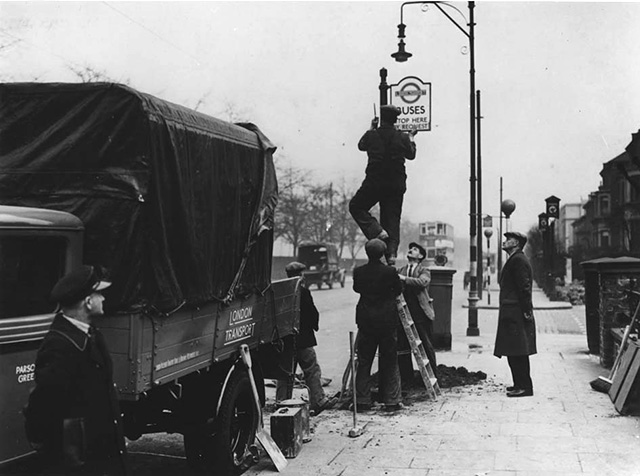 |
One of the new bus stops being erected in February or March 1935 for the experimental fixed stop scheme. The location is the stretch of Seven Sisters Road between Finsbury Park station and Manor House, close to the junction with Alexandra Road (renamed Alexandra Grove in 1937) and so named on the publicity leaflet. The existing tram stops were resited as part of the scheme and one of the new tram stop flags can just be seen in the background, attached to the traction pole adjacent to the Hornsey Wood Tavern. They were separately sited as trams had to halt on the crown of the road whereas buses could pull in to the kerb.
© TfL from the London Transport Museum collection www.ltmuseum.co.uk |
| |
RAILWAY STREET FURNITURE
By their nature railways in Britain have relatively few items of street furniture associated with them as they are constructed on private property fenced off from public access except at stations and various crossing points. The existence of a thriving collectors’ market for historic railway signs has meant that after being superseded few have remained at their original locations to continue to be viewable by the general public passing by. The property sign installed by the London & North Eastern Railway Company on the forecourt of Enfield Town station [ENF106] is however fixed firmly into the pavement. Though dating from some time between 1923 and 1947, the property boundary it designates was probably still valid in 2021, though the land thus marked may now be owned by Network Rail. |
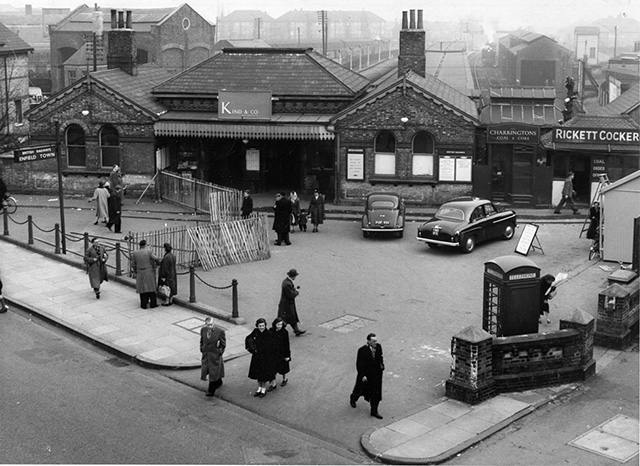 |
Enfield Town in about 1957 just before the existing 1872 station building was demolished. The present location of the LNER property plate [ENF106] is just out of shot, right.
© copyright unknown
|
| |
 |
|
| scroll with the mouse to zoom in and out; click and drag to pan |
| |
WAR MEMORIALS FOR TRANSPORT STAFF
When memorials for staff who had fallen in the First World War were first installed in bus garages in London, it would have been with reasonable confidence that they had been provided with fairly permanent and long-lasting locations. In more recent years, though, political and economic pressures have disrupted the organization of road passenger transport in London, leading to the closure of many older garages. Hendon bus garage (code AE) in The Burroughs, Hendon, was opened by the London General Omnibus Company in 1913 but closed in 1987 and later demolished. The building at Woodberry Grove, North Finchley, was opened as a tram depot by the Metropolitan Electric Tramways Ltd in 1905. It was converted for trolleybuses in 1936 (code FY from 1950) and again in 1961 for motor buses. It was closed in 1993 and also demolished. Fortunately the war memorials at both sites were preserved and were later appropriately placed in the front garden of the Finchley United Services Club in Ballards Lane, North Finchley [BAR103 and BAR104]. Though this had the benefit of making them more publicly accessible, in their original locations they were mounted vertically, ensuring that they were relatively well protected from the weather. In the garden they are now fixed at a shallow angle and are far more vulnerable to deterioration. |
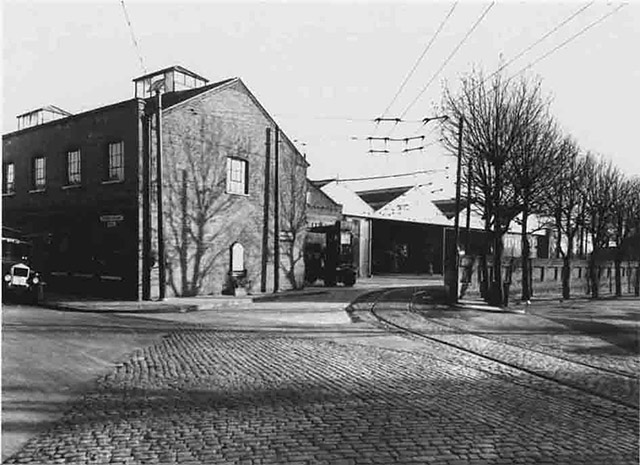 |
Finchley depot in 1936. The war memorial can bee seen on the building in the foreground.
© copyright unknown
|
| |
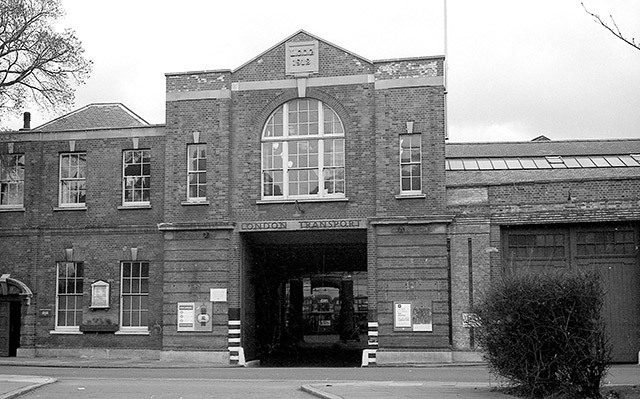 |
Hendon garage with the war memorial seen to the left.
© Mick Webber
|
| |
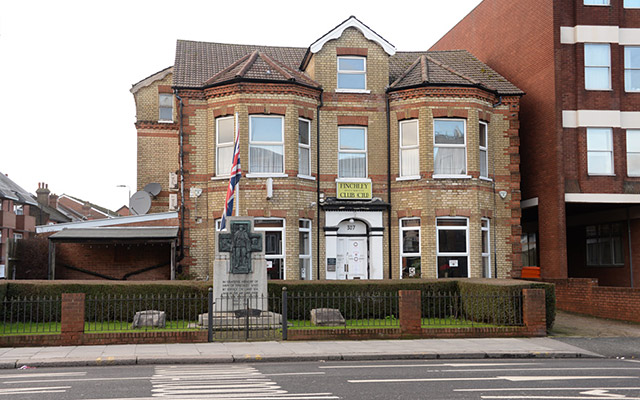 |
Finchley United Services Club on 28th January 2021. The Hendon garage memorial is to the left of large memorial and that from Finchley depot to the right. |
| |
| < back to the main Street Furniture page |
| |
| * * * |
| |